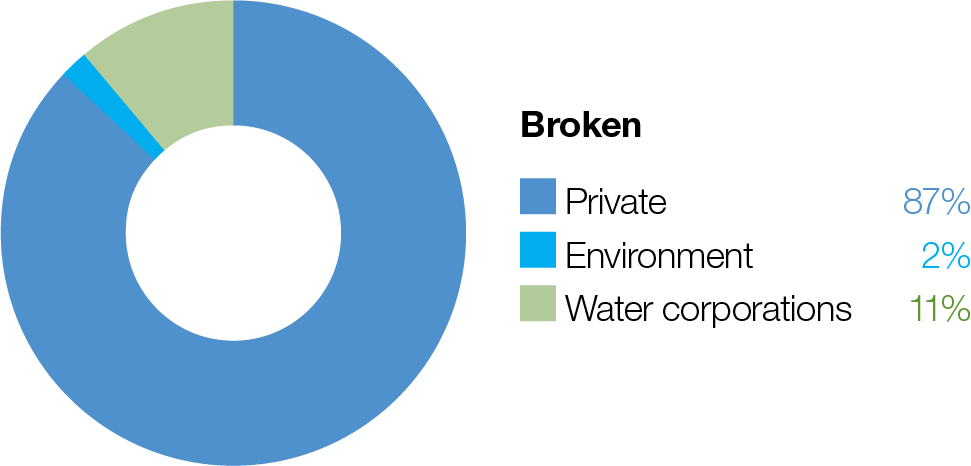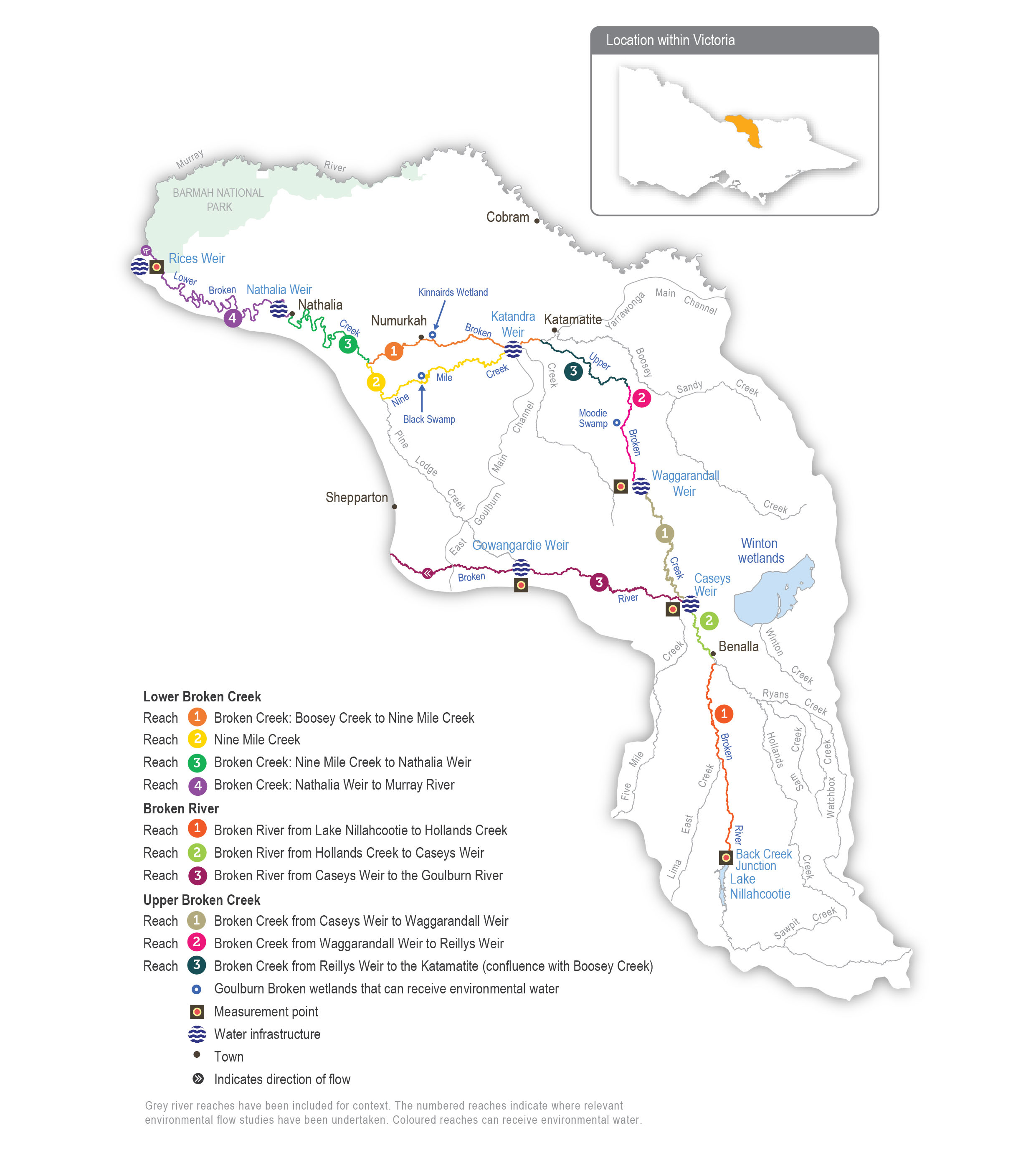Lake Nillahcootie has a storage capacity that is about half the mean annual flow of its upstream catchment, so it fills in most years. The operation of Lake Nillahcootie has modified the river’s natural flow pattern: winter/spring flow is less than natural because a large proportion of inflow is harvested, while summer/autumn flow is greater than natural because water is released to meet downstream irrigation demands. These impacts are most pronounced in the reach between Lake Nillahcootie and Hollands Creek. Below Hollands Creek, the river retains a more-natural flow pattern due to flows from unregulated tributaries, although the total annual flow is considerably less than natural. The catchment has been extensively cleared for agriculture, including dryland farming (such as livestock grazing and cereal cropping) and irrigated agriculture (such as dairy, fruit and livestock).
Water is released from Lake Nillahcootie to meet downstream demand and minimum-flow requirements specified under the bulk entitlement for the Broken River system. Releases from storage may be less than 30 ML per day as tributary inflows immediately below the storage (such as from Back Creek) can supply much of the minimum-flow requirements specified in the bulk entitlement.
Upper Broken Creek is defined as the 89-km stretch of creek from the Broken River (at Caseys Weir) to the confluence with Boosey Creek near Katamatite. Upper Broken Creek flows across a flat riverine plain and has naturally low run-off from its local catchment. It receives flood flows from the Broken River, although the frequency of these floods has been reduced by river regulation, earthworks and road construction.
Upper Broken Creek has been regulated for more than a century. Before 2007, water was diverted into upper Broken Creek at Caseys Weir to meet local demand, but recent water savings projects have reduced the demand on the creek. There is now a low flow throughout the year between Caseys Weir and Waggarandall Weir. The flow below Waggarandall Weir is mainly influenced by rainfall and catchment run-off. These changes have reduced the amount of permanent aquatic habitat.
Delivery of water for the environment to the Broken River is primarily constrained by the small volume of water holdings in the Broken system. Environmental water holders can trade water into the Broken system from other trading zones subject to relevant limits and conditions to meet environmental needs.
The bulk entitlement for the Broken system held by Goulburn-Murray Water stipulates that a minimum environmental flow – also known as passing flow – is to be maintained in the Broken River when there are natural flows into the system. The bulk entitlement also allows Goulburn-Murray Water and the Goulburn Broken CMA to agree to reduce the minimum passing flow and accumulate unused volumes for later releases that will provide a greater environmental benefit. In recent years, the passing flow has been reduced, accumulated and delivered to maintain a low flow (on days when there is no passing flow due to no natural flow into the system) and freshes in the Broken River. Accumulated passing flow is the first volume lost when the storage spills. Environmental flows in upper Broken Creek are restricted by the volume of available supply, channel capacity and the need to avoid flooding low-lying, adjacent land.

Proportion of water entitlements in the Broken system held by private users, water corporations and environmental water holders on 30 June 2020




